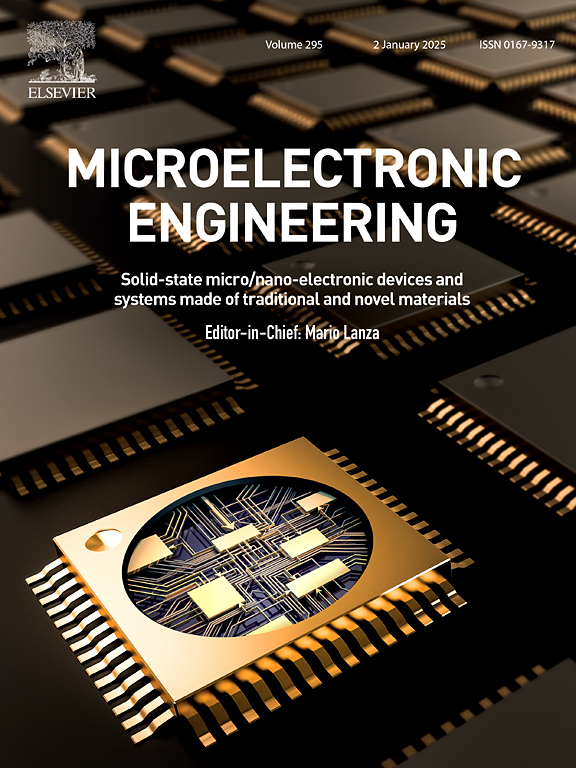Seed-assisted growth of large-area β'-In2Se3 ferroelectric thin films
IF 3.1
4区 工程技术
Q2 ENGINEERING, ELECTRICAL & ELECTRONIC
引用次数: 0
Abstract
The recent discovery of two-dimensional ferroelectric semiconductors, such as In2Se3, has opened promising avenues for ultra-thin micro-nano electronic devices, and energy-efficient neuromorphic systems. Despite these exciting prospects, achieving large-area, high-quality, layer-controlled growth of single-phase In2Se3 remains a considerable challenge. In this study, we present a seed-assisted strategy for growing uniform, centimeter-scale β'-In2Se3 thin films by mixing In2O3 and In2Se3 single crystals in a specific ratio. The resulting β'-In2Se3 phase and composition are verified through X-ray diffraction, transmission electron microscopy, and Raman spectroscopy. Furthermore, the ferroelectric properties and domain configurations have been characterized by using polarized light microscopy and piezoresponse force microscopy. Importantly, we investigate the topological evolution of ferroelectric domains across films with varying thicknesses, revealing insights into domain structure modulation. This growth method not only provides a scalable route for synthesizing similar ferroelectric two-dimensional materials but also a possibility for the practical integration of β'-In2Se3 in optoelectronic, neuromorphic, and other advanced micro-nano electronic applications.

β′-In2Se3铁电薄膜的种子辅助生长
最近发现的二维铁电半导体,如In2Se3,为超薄微纳米电子器件和节能神经形态系统开辟了有希望的道路。尽管有这些令人兴奋的前景,实现大面积、高质量、层控生长单相In2Se3仍然是一个相当大的挑战。在这项研究中,我们提出了一种种子辅助策略,通过以特定比例混合In2O3和In2Se3单晶来生长均匀的厘米级β'-In2Se3薄膜。通过x射线衍射、透射电镜和拉曼光谱验证了β′-In2Se3的相和组成。此外,还利用偏振光显微镜和压电响应力显微镜对其铁电性质和畴结构进行了表征。重要的是,我们研究了不同厚度薄膜上铁电畴的拓扑演变,揭示了对畴结构调制的见解。这种生长方法不仅为合成类似的铁电二维材料提供了可扩展的途径,而且为β'-In2Se3在光电、神经形态和其他先进的微纳电子应用中的实际集成提供了可能性。
本文章由计算机程序翻译,如有差异,请以英文原文为准。
求助全文
约1分钟内获得全文
求助全文
来源期刊

Microelectronic Engineering
工程技术-工程:电子与电气
CiteScore
5.30
自引率
4.30%
发文量
131
审稿时长
29 days
期刊介绍:
Microelectronic Engineering is the premier nanoprocessing, and nanotechnology journal focusing on fabrication of electronic, photonic, bioelectronic, electromechanic and fluidic devices and systems, and their applications in the broad areas of electronics, photonics, energy, life sciences, and environment. It covers also the expanding interdisciplinary field of "more than Moore" and "beyond Moore" integrated nanoelectronics / photonics and micro-/nano-/bio-systems. Through its unique mixture of peer-reviewed articles, reviews, accelerated publications, short and Technical notes, and the latest research news on key developments, Microelectronic Engineering provides comprehensive coverage of this exciting, interdisciplinary and dynamic new field for researchers in academia and professionals in industry.
 求助内容:
求助内容: 应助结果提醒方式:
应助结果提醒方式:


